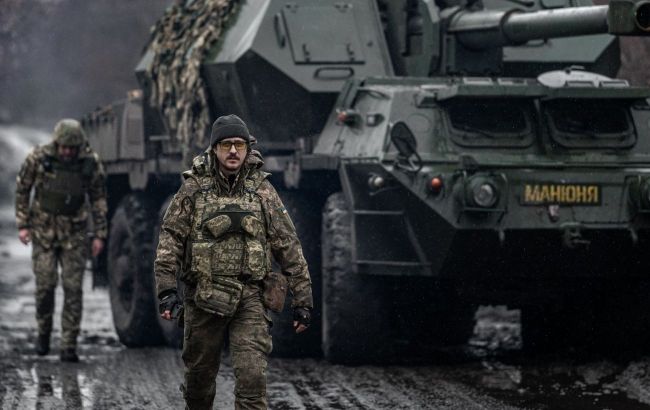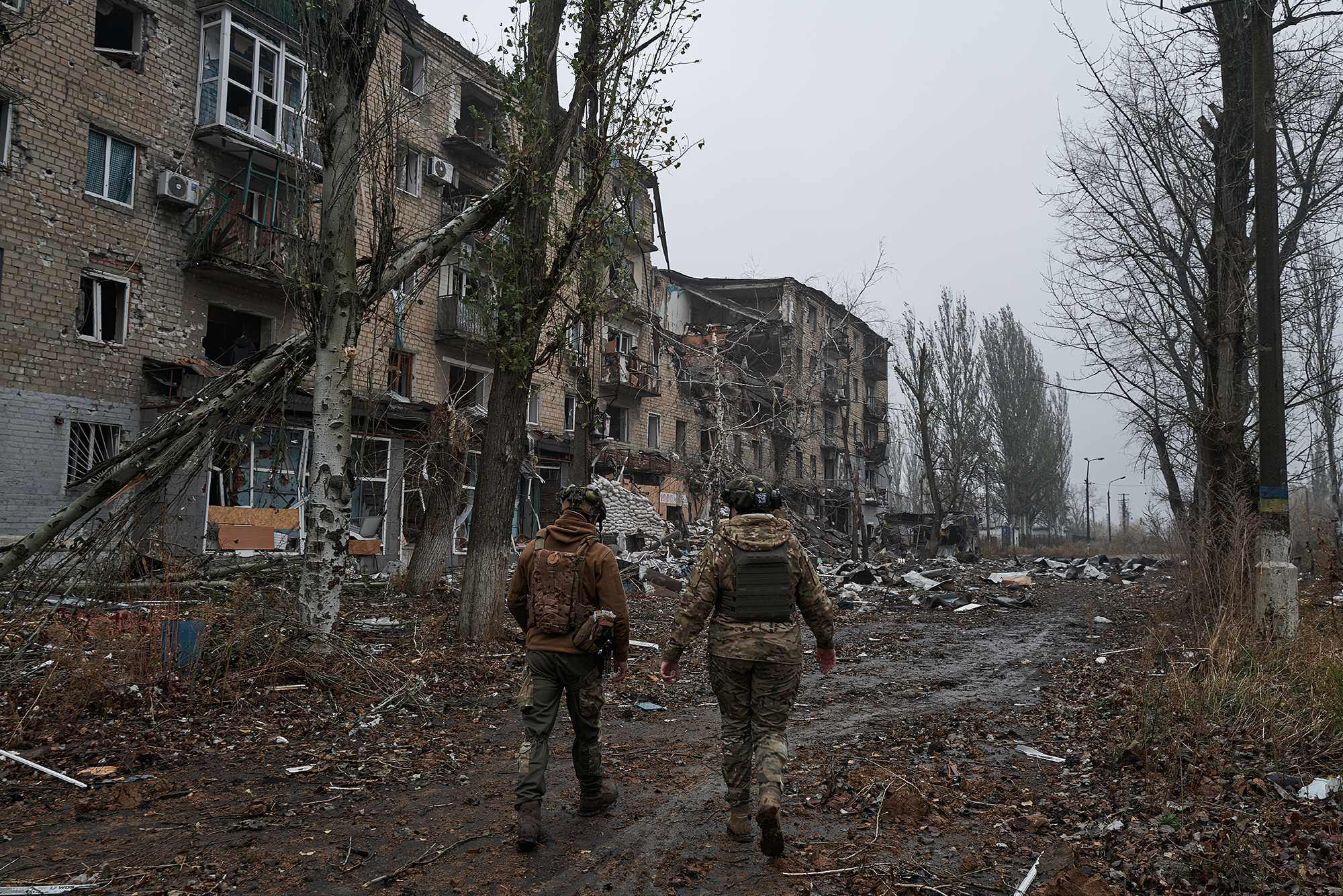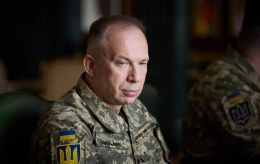Why Ukrainians withdrew from Avdiivka and whether Russia continues to advance: Expectations at front
 Soldiers of the 110th Separate Mechanized Brigade, which was in the Avdiivka garrison (photo: facebook.com/110separatebrigade)
Soldiers of the 110th Separate Mechanized Brigade, which was in the Avdiivka garrison (photo: facebook.com/110separatebrigade)
Ukrainian troops have withdrawn from Avdiivka after months of particularly fierce fighting. This happened after Russian forces partially surrounded the city and cut off the main logistics route. RBC-Ukraine's article explains why the Defense Forces withdrew from Avdiivka and how the situation at the front will develop.
The material was prepared using the following sources: statements by the Commander-in-Chief of the Armed Forces of Ukraine Oleksandr Syrskyi, Commander of the Tavria Strategic Group of Troops Oleksandr Tarnavskyi, President Volodymyr Zelenskyy, Defense Minister Rustem Umerov, the Telegram channel and statements by representatives of the 3rd Separate Special Forces, an analyst from the Institute for the Study of War, and comments by experts Oleksandr Musienko and Oleksiy Hetman.
Why did Ukraine build up reserves on the eve of withdrawal from Avdiivka
At the beginning of the week, the commander-in-chief of the Ukrainian Armed Forces, Oleksandr Syrskyi, visited the Avdiivka sector. He informed about the order to deploy reserves and regroup troops, and said that given the rapidly changing situation on the battlefield, he allowed local commanders to make their own decisions to save their personnel.
As it became known on Thursday, the 3rd Separate Assault Brigade, one of the most combat-ready units of the Armed Forces of Ukraine, was urgently redeployed there. According to the soldiers, separate battalions raided the captured areas of Avdiivka, and the enemy forces on their section amounted to approximately 7 brigades. The Ukrainian military were immediately forced to fight almost 360 degrees.
According to Deputy Brigadier Maksym Zhorin, combat missions had to be performed in conditions that were hard to imagine. The enemy was attacking from all sides, and the battles were more hellish than the hottest ones in Bakhmut.
"To give you an idea of the distribution of forces: there are some positions where 6 Ukrainian soldiers are holding the defense, while about 100 occupants are storming," he said.
Press officer Oleksandr Borodin emphasized that the enemy had sent two armies to Avdiivka, with an approximate ratio of 1:7 in the enemy's favor. In addition, unlike Bakhmut with its "meat waves" performed by former prisoners and specialists from the Wagner PMC, the Defense Forces were confronted by perhaps the most serious Russian fist in the form of linear mechanized brigades and specialists from the Russian State Intelligence Service. Which had a virtual unlimited use of guided aerial bombs, tanks, infantry fighting vehicles, armored personnel carriers and FPV drones.
The day before, it became clear that the Defense Forces were gradually abandoning their positions under enemy pressure. In particular, the commander of the Tavria operational and strategic group of troops, Oleksandr Tarnavskyi, announced the withdrawal from the Zenit position on the southeastern outskirts of the city. And President Volodymyr Zelenskyy said the main task was to do everything to protect the personnel.
According to Oleksandr Musienko, head of the Center for Military Legal Studies, the reserves were redeployed to stabilize the situation and restrain Russian pressure to ensure the withdrawal from Avdiivka.
"From the very beginning, I said that the 3rd assault brigade could have had such a task. In addition, the Defense Intelligence of Ukraine and some other units were involved. I do not exclude that additional air defense systems were used to cover the retreat. Hence the Air Force's announcement that two Su-34s dropping guided bombs were shot down this morning, as well as a Su-35 fighter jet that was apparently accompanying them. A whole range of measures were taken to get as many of our people out as possible. In the end, the 3rd assault brigade and other units coped with this task," he told RBC-Ukraine.
Without the transfer of reserves, it would have been much more difficult to do so, the expert explains.
"While our fighters are retreating, the enemy does not stop attacking, so someone has to hold them back. Fresh forces provided us with time to withdraw and, in addition, continued to inflict significant losses on the enemy," he added.
Why Avdiivka is important and why the troops have left only now
Russian troops have been trying to capture Avdiivka since the start of the full-scale invasion in 2022, but the largest offensive has been underway since October 2023. Ukrainian officials have said that Russian dictator Vladimir Putin has set a goal to capture the city at any cost before the March elections. Anonymous Telegram channels said he was now likely to come and record a "victory speech" from Avdiivka or Donetsk.
Avdiivka is a small industrial suburb of Donetsk. Since 2014, Ukrainian troops have built a powerful fortified area. Since February 2022, it has been holding back the superior enemy for almost two years. The Russian army was unable to capture the city by surprise and turned to traditional tactics of destruction. Today, there is little left of it: almost all buildings have been destroyed by intense air strikes.
 Destruction in Avdiivka (photo: Getty Images)
Destruction in Avdiivka (photo: Getty Images)
In four months, the Russians have managed to advance several kilometers in the north and south, seize the surrounding villages, and approach an important stronghold at the local coke plant. In recent weeks, the enemy has been able to impose street fighting and cut the main logistics artery in the area of Industrialnyi Avenue, putting the Avdiivka garrison at risk of encirclement.
While for the Russians the capture of Avdiivka is primarily of political importance and will be used in their propaganda campaign, for Ukraine it was important as a major railroad junction and industrial center. It was also a constant potential threat to Donetsk.
"It was possible to control the city of Donetsk with artillery fire. We didn't shell it, but the Russians knew we could do it. That is why the Russians did not set up warehouses or military hubs there," said Oleksiy Hetman, a reserve major in the Armed Forces of Ukraine and a military expert.
The importance of holding the city was explained in an interview with RBC-Ukraine by Dmytro Lykhoviy, spokesperson for the Tavria strategic group.
"Holding Avdiivka is important in order to prevent Russian artillery and Russian terror from moving further to the west of Donetsk region. To grind down Russian resources and reserves, to deplete their armada," he emphasized.
As of yesterday, it is clear that the capabilities of the Ukrainian troops have been exhausted. On the night of February 17, General Syrskyi announced the decision to withdraw units from the city to more favorable positions.
"Our soldiers performed their duty with dignity, did everything possible to destroy the best Russian military units, inflicted significant losses in manpower and equipment on the enemy. We are taking measures to stabilize the situation and hold our positions," he said.
According to General Tarnavskyi, it was the only right decision when the enemy is advancing over the corpses of its soldiers and has a 10:1 advantage in shells. According to him, Ukrainian forces are holding positions on the second line of defense, the personnel were withdrawn according to the plan, but at the final stage several soldiers were captured. Maksym Zhorin, deputy brigadier of the 3rd assault brigade, noted that as of 13:00 the operation to withdraw from Avdiivka was still ongoing.
Expert Oleksandr Musienko gives several reasons why the order to withdraw came now, although the situation was called critical before. The first is the extremely rapid Russian offensive.
"It was no longer possible to hold them back, they were moving quite actively from the northern flank, plus they started to advance in the buildings, fighting was going on in Avdiivka itself. Another point is that they were coming closer and blocking the logistics, and there was a constant struggle for the routes of communication, for the road that we used to supply our group. And not least because of the growing number of attacks with guided aerial bombs and the active use of aircraft. As a result, there is a threat of encirclement," he emphasized.
Speaking at the Munich Security Conference, President Zelenskyy called the withdrawal correct and professional. He also directly stated that the loss of Avdiivka was the result of insufficient support from international partners. Defense Minister Rustem Umerov assured that Ukraine will retake Avdiivka, but to successfully counter Russia, it needs modern air defense systems (to protect against guidd bombs), long-range weapons (to destroy warehouses), and more artillery shells.
Where the front will shift and how far the Ukrainian Armed Forces can go
Analysts at the American Institute for the Study of War (ISW) remind that the assaults on Avdiivka began on October 10, 2023, and only several months later the Russians began to achieve real tactical success amid huge losses in personnel and equipment.
It is possible that the occupiers may try to move further west, but they will be met by the powerful fortified positions of the Defense Forces. At the same time, they do not demonstrate readiness to advance in the short or even medium term. According to the report, Avdiivka has cost Russia a high price, and a period of recovery and rest will be required for a further offensive. However, the capture of the city creates conditions for limited tactical advantages, analysts admit.
According to the Ukrainian portal Defense Express, during the 723 days of the full-scale war, Russia managed to advance about 6 km in the Avdiivka direction - a little more than 8 meters a day, and on each of these meters, the Russians put hundreds of their soldiers. Judging by Deep State maps, the new frontier of Ukrainian defense awaits them on the Stepove-Severne line.
Expert Oleksandr Musienko believes that the Defense Forces may retreat further beyond the Stepove-Severne line and calls it a temporary position.
"Perhaps we will gradually withdraw so as not to endanger ourselves if the enemy continues to press. We can't retreat any further, given that there are plains and the territory is shelled. The nearest heights are about 10-15 kilometers away, and our artillery is likely to interfere with enemy attempts to advance from there," he said.
In his opinion, the Russians will suspend the offensive, but for a short time.
"They have suffered significant losses, their troops are exhausted from constant assaults on Avdiivka, so I don't think they will be able to make a rapid breakthrough. In addition, we can see the activation near Kupiansk and Chasiv Yar, they also need forces that will not be redeployed to Avdiivka now. In the next month, the offensive will continue, but less than in Avdiivka itself. And then the attacks will decline," he added.
Oleksiy Hetman calls a further offensive unprofitable and unlikely, as the Russians will be under Ukrainian fire control.
"We will have a situation similar to Bakhmut, when the Russians also said they would immediately advance, but then stopped. We shouldn't expect any new Russian advances in the near future, as they have accomplished their task before the so-called presidential elections. Therefore, I do not think they have such plans," the expert explained.
Kupiansk or Chasiv Yar. Should we expect escalation in other areas?
Despite the intense assaults on Avdiivka, the Kupiansk direction remains one of the hottest on the eastern front. However, the intensity of fighting there has slightly decreased compared to January.
The Russians are advancing in two areas. The first is near the village of Synkivka, which is about 5 kilometers from the outskirts of Kupiansk. Last week, there was information about the appearance of the occupiers and their alleged control of up to 15% of the village, but this is not the first time a similar situation has occurred and the Defense Forces have managed to drive the enemy out before. The second point is in the area of Tabaivka and Krokhmalne. Last month, the enemy made a small advance, but the Ukrainian Armed Forces prevented them from building on their success. Now the front is stabilized, Ukrainian troops are focused on holding important heights west of Tabaivka.
However, 40,000 troops, more than 500 tanks and about 600 combat vehicles, hundreds of howitzers and MLRS have been deployed to the Kupiansk direction. Experts interviewed by RBC-Ukraine said that the threats here will be constant, and an active assault may begin after local gains in other parts of the front.
"For example, if they manage to achieve some situational success in the Avdiivka area, they can really move to this level near Kupiansk," believes Oleksandr Kovalenko, a military and political observer at the Information Resistance group.
Read more about this in a separate article by RBC-Ukraine.
According to Musiyenko, after Avdiivka, the Russians will definitely try to attack Kupiansk.
"This will be one of their priorities now. We should expect that it is there that the enemy will be actively attacking. Accordingly, the focus may shift to this area," he explained.
But not only to Kupiansk. Today, the occupiers do not stop attacking from Bakhmut towards Chasiv Yar. Therefore, the threats to it also remain.
"They are not attacking in the same way as Avdiivka. They do not use the same number of guided aerial bombs. But there are other means - artillery drones, mortars and so on. It is already clear that they are increasing the pressure, it is true," added the expert.
When assessing the situation at the front, it is important to understand that Ukraine is forced to wage a defensive war. Therefore, from a military point of view, retreating to other lines and fortifications is not a complete disaster. Especially when the enemy has the upper hand, and especially in the air.

